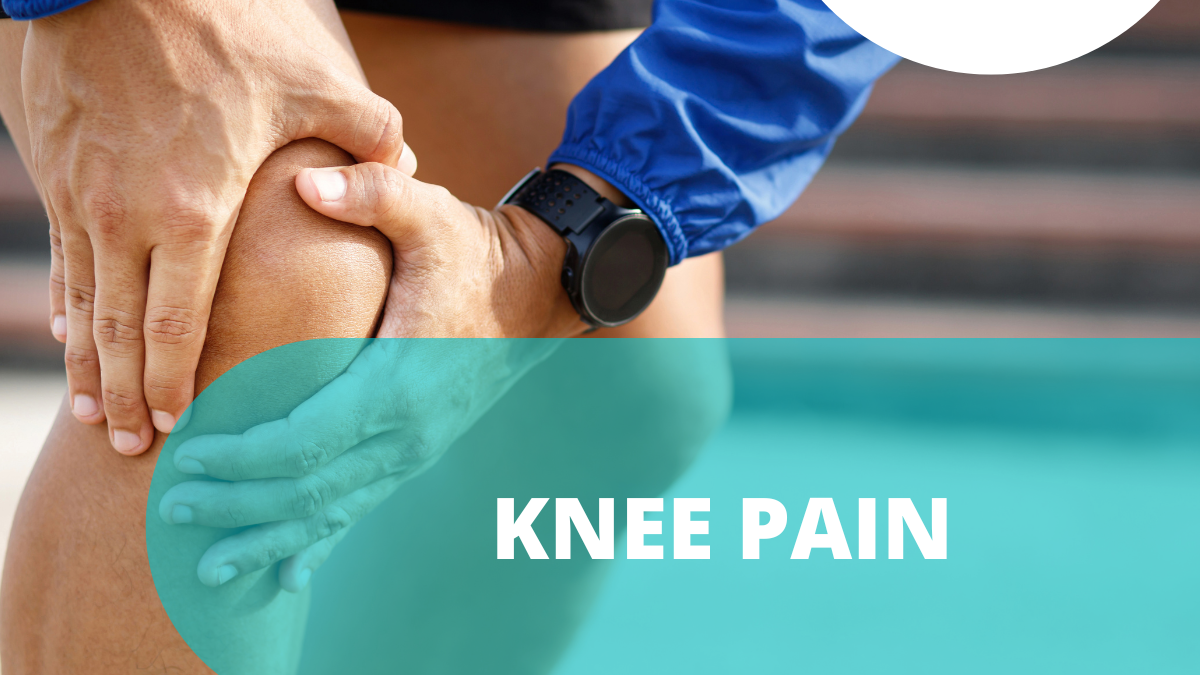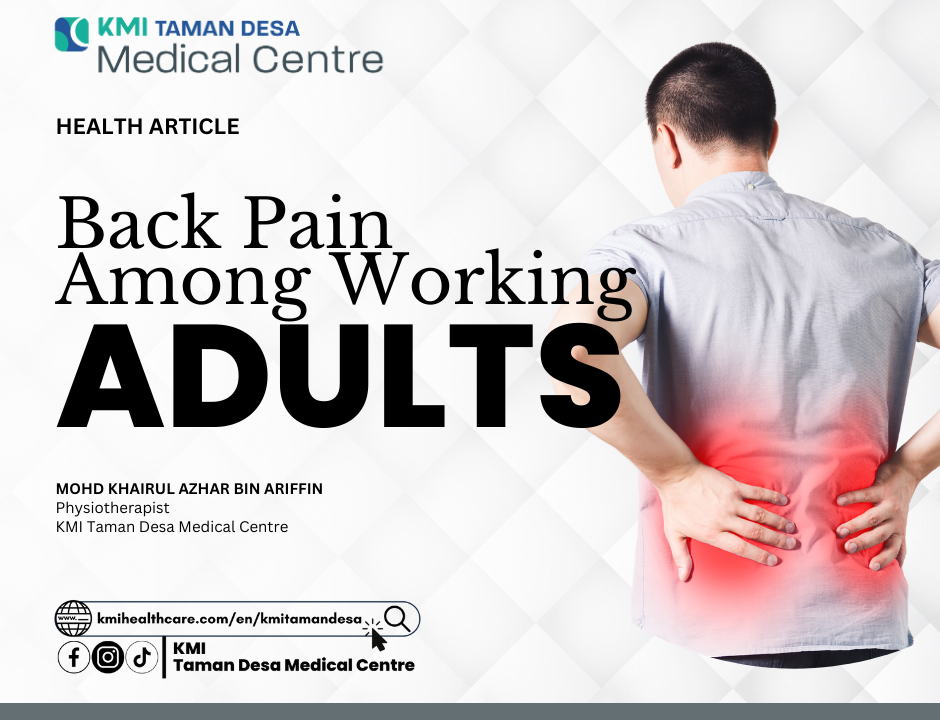
[ KJMC ] What You Should Know: The Radiation Dose In X-ray And CT Procedures
20 September 2022
[TDMC] The Importance of Special Needs Assessment and Diagnosis of Developmental Problems at an Early Age
5 December 2022
Knee Pain Overview
There is a high prevalence of knee problems. They might be so painful that they make it hard to do simple things like walking. You may experience this discomfort when bending your knee or consistently placing weight on it. However, there are treatments and methods for pain management that can remove or lessen these issues.
Symptoms:
The location and intensity of knee pain might vary based on the underlying cause of the issue. The following signs and symptoms may accompany knee pain:
- Redness and warmth to the touch
- Swelling and stiffness
- Popping or crunching sounds
- Weakness or instability
- Inability to fully extend the knee
Causes:
The components of your knee joint include bone, cartilage, ligaments, and fluid. Muscles and tendons aid in knee movement. When any of these components are injured, knee issues develop. The following are some of the most frequent reasons for knee pain:
- An anterior cruciate ligament (ACL) injury is a tear of one of the four ligaments that link the shinbone to the thighbone.
- Knee bones, particularly the kneecap (patella), can be fractured in the falls and car accidents. In addition, those whose bones have been compromised by osteoporosis may suffer a knee fracture if they misstep.
- The meniscus is the resilient, rubbery cartilage that functions as a stress absorber between the tibia and femur. Tears of the meniscus also cause pain.
- Some knee injuries result in the inflammation of the bursae, the little fluid-filled sacs that cushion the exterior of the knee joint, allowing the tendons and ligaments to slide easily over it.
- Tendinitis irritates and inflames one or more tendons – the dense, fibrous fibers that connect muscles to bones. Injury to the patellar tendon, which connects the kneecap (patella) to the shinbone and allows you to kick, run, and leap, can cause this inflammation. Runners, skiers, bikers, and participants in jumping sports and activities are susceptible to developing patellar tendinitis.
Treatment Options:
1. Supplements
Several nutritional supplements have shown promise for relieving pain, stiffness and other arthritis symptoms. Fish oil, SAM-e and curcumin are among the supplements with the best evidence to support them. The research on glucosamine and chondroitin, some of the most popular supplements for osteoarthritis, is mixed, but they may help with OA pain and stiffness.
2. Hyaluronic Acid
Injections of hyaluronic acid will not heal all painful knee ailments. Nevertheless, injections can be pretty helpful for osteoarthritis. Hyaluronic acid injections restore the synovial fluid of the knees, providing up to six months of pain alleviation.
Other painful knee diseases, such as ligament tears, tendonitis, and sprains, do not respond well to the therapy. Hyaluronic acid injections replenish the synovial fluid of your joints; they do not rebuild your tissue.
3.Cortisone
After receiving a cortisone injection may temporarily boost your blood sugar levels if you have diabetes.
- After receiving a cortisone injection, your doctor may instruct you to:
- Protect the injection site for two days. For instance, if you get a cortisone injection in your shoulder, you should avoid hard lifting. If you had a cortisone injection in your knee, rest as much as possible.
- As needed, apply ice to the injection site to alleviate discomfort. Avoid using heating pads.
- Be on the lookout for indicators of infection, such as escalating pain, redness, and swelling, those last more than 48 hours.
4.Platelet-rich Plasma (PRP)
Platelet-rich plasma (PRP) injections are an innovative method for treating knee osteoarthritis (OA)-related pain. Scientists are still investigating this idea.
Some PRP preparations have been approved by the Food and Drug Administration (FDA). However, the use of PRP in knee OA is not yet supported. However, specific clinics may provide it “off-label.”
5. Stem Cell Therapy
Stem cell therapy has been hailed recently as a miracle cure for many conditions, from wrinkles to spinal cord injuries. Animal studies have shown that stem cell treatments for several diseases and conditions, including cardiac problems, Parkinson’s, and muscular dystrophy, have positive effects on the host.
Knee osteoarthritis (OA) might potentially be treated with stem cell treatment in early stage. In OA, the cartilage that covers the bone ends begins to degrade and wear away. As the bones lose their protective coating, they begin to rub together. This finally results in friction causing discomfort, pain, stiffness, loss of function and deformity.
Consistent physical activity, healthy eating, medication, and alterations in lifestyle are effective for many in controlling their symptoms.
Complications and Prevention
However, if you ignore the pain and joint degeneration caused by knee injuries or disorders like osteoarthritis, you may be unable to do what you formerly enjoyed. And having a knee injury, even a slight one, increases the likelihood that your problem will deteriorate further necessitating surgery.
Various medical conditions, including arthritis, gout, and infections, can also contribute to knee pain. Numerous forms of mild knee discomfort respond favorably to self-care. Physical therapy and knee braces can also provide pain relief.
Injuries or deterioration of bone or cartilage can cause bone or cartilage fragments to break off and float in the joint space. This may not cause any issues until the loose body interferes with knee joint mobility, which is comparable to a pencil stuck in a door hinge.
When the rough band of tissue that runs from the outside of the hip to the outside of the knee (iliotibial band) is pulled so tightly that it scrapes on the outside portion of the thigh bone, a painful condition known as iliotibial band syndrome can occur. Runners of long distances and bikers are particularly prone to iliotibial band syndrome.
Article by:
Consultant Orthopaedic & Sports Injuries
KMI Taman Desa Medical Centre




